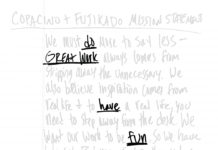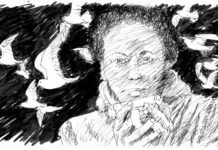
CMOPinions
Pub Note: To get the ball rolling, we’ve called on veteran MARKETING columnist Rod Brooks, long-time CMO of PEMCO Insurance, to share what he sees as the biggest challenges facing CMOs today. Your feedback is encouraged.
By Rod Brooks
 I’ve been a brand guy my entire career and I’ve been the senior marketing executive or CMO the past several stops where I’ve gone to fun (not a big fan of going to work). One of my biggest surprises is that I’ve been invited to continue the CMO role at PEMCO for each of the past 18 years. That’s pretty much unheard of in the world of CMOs.
I’ve been a brand guy my entire career and I’ve been the senior marketing executive or CMO the past several stops where I’ve gone to fun (not a big fan of going to work). One of my biggest surprises is that I’ve been invited to continue the CMO role at PEMCO for each of the past 18 years. That’s pretty much unheard of in the world of CMOs.
No, it isn’t easy. If it were, everyone would be a CMO.
CMOs feel challenged, inside and out. If it isn’t brand awareness, lead generation or market share, it’s culture, environment and employee engagement. It’s a “what have you done for us lately” type of role that requires an unusual mix of courage, confidence and adventure to accept an assignment that typically has a four-year lifespan (about half that of the CEO).
It also requires an understanding family that welcomes adventure and plenty of new mailing addresses (but that’s a story for another time and place).
So, what keeps CMOs awake at night? Here’s my perspective on a handful of topics likely to challenge us in 2017. Can you spot the one thing they all have in common?
1. Marketing attribution—There was a time when CMOs got away with the old adage, “I know that half of my marketing works, I just don’t know which half.” It was good for a laugh in the C-Suite, but it held more truth than most CMOs’ colleagues realized. Today, the C-Suite is smarter and expects more.
CEOs know that data science has advanced, and forward-leaning companies are becoming skilled at assigning credit, or allocating dollars from a sale, to the marketing touchpoints visible to customers before they bought. The CMO that emerged in the 1990s has some serious catching up to do.
2. Digital Transformation—Remember when CMOs stopped writing memos and began using email? If you do, you’re probably nearing retirement. It was as big a digital transformation as our profession had seen in many years. It was huge, yet it was nothing, compared with what’s exploded onto the scene today. CMOs are now the trailblazers. We must build data-driven processes with metrics that squeeze the guesswork out of marketing (see Topic No. 1).
CMOs, and the organizations we’re part of, are adopting a “digital first” mantra and mindset. How we inform, influence and engage customers isn’t up to us. Consumers increasingly set the terms of the relationship, the distribution channels, payment methods and value metrics.
It was huge, yet it was nothing, compared with what’s exploded onto the scene today. CMOs are now the trailblazers.
When I began at PEMCO, I stressed the importance of being customer-centric and market-driven. Over the past 18 years, that mantra has shifted. Now, it’s about being customer-centric and digitally driven.
CMOs need to be best friends with their CIO colleagues. A CMO path to success now goes through technology. In most organizations, it’s the CMO with the vision and the CIO with the budget and resources. For some, that’s probably a concern.
3. Customer experience—The modern-day CMO has learned the importance of customer experience and engagement. No matter how hard our organizations try to deliver a “world-class experience,” it’s frequently fragmented, disjointed and inconsistent. No one owns the customer, but the CMO should be responsible for the customer experience, end-to-end.
In reality, the customers and prospects own the buyer-seller relationship today. One sure way to send them rushing to competitors is to treat them as if they’re total strangers. Again, today’s technologies enable the CMO to build and deliver a unified view of the customer.
The effective use of technology will connect the experience across channels, predict consumer behavior and ensure that the most relevant information and offers are personalized, sent at the right time and delivered via the preferred channel. It’s about turning routine touchpoints into remarkable talking points, and creating consumer advocates, based on nurtured relationships.
4. Brand integrity—I wouldn’t be a brand marketer if I didn’t put brand integrity among the top-five CMO challenges. In fact, it’s probably closer to No. 1 than No. 5. Ten years ago, PEMCO evaluated its brand position, assessed the market for winning opportunities, identified key differentiators and reconnected with consumers in ways that were remarkable, sustainable and highly effective.
By listening to the market and being responsive to what we heard, PEMCO emerged as one of the Northwest’s most recognized, talked about and respected brands. Good for us. If I were a four-year CMO, I’d take the results, polish up the resume and move to the next gig. But that’s not good enough, if you plan to stick around.
The brand must remain current and responsive, and today’s CMO must ensure that the brand strategies recognize and anticipate consumer’s current and future wants and needs. A successful brand, and the CMO who guides it, will encapsulate the very essence of what the organization’s about—inside and out—and serve to filter out all aspects of the business moving forward. If you won’t worry about anything else, always worry about the integrity of your brand expression and experience.
5. Talent management—One of the biggest challenges for CMOs is retraining and retooling talent. All the traditional skill sets, like brand positioning and marketing strategy, remain important. But the shifts in technology, data-driven decision-making and how consumers choose to interact with brands, have changed. There are new roles—specialists of a new variety—that are essential to navigating the new environment.
CMOs who plan to unleash the full power of new customer-centric technologies will need digitally native talent throughout the organization—not just for data analytics, but a full range of expertise that can fully exploit the opportunities that new technology provides.
For the CMO who prefers to outsource, the puzzle is further complicated. CMOs are choosing agencies that focus on discreet parts of the strategic plan with greater frequency, knowing that “full-service” firms can’t fulfill the need. That leaves the CMO to assemble all the pieces, which requires the right balance of investment, time and talent to execute in market. Combine that with a need for speed and a constantly shifting marketplace, and you’ve got yourself a challenging role.
So, what keeps CMOs awake at night? You may have noticed that the common thread in all five challenges is technology. It’s here, it’s fast and it’s changing the CMO world we once knew. If it were easy, everyone would be one.
You can reach the author at rod.brooks@pemco.com.













